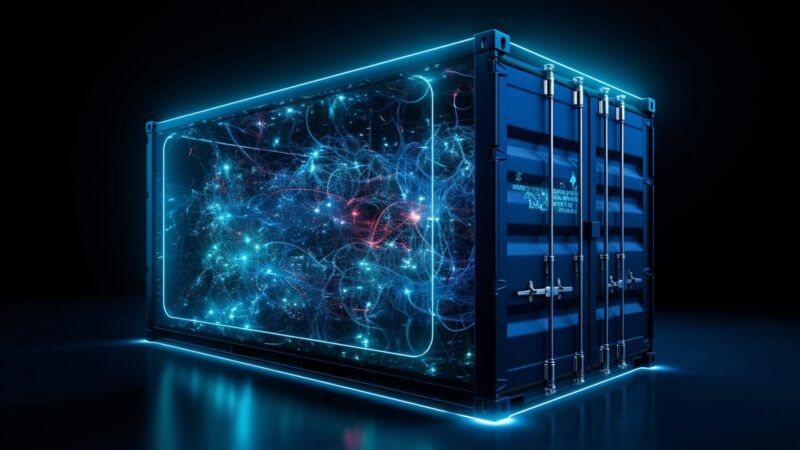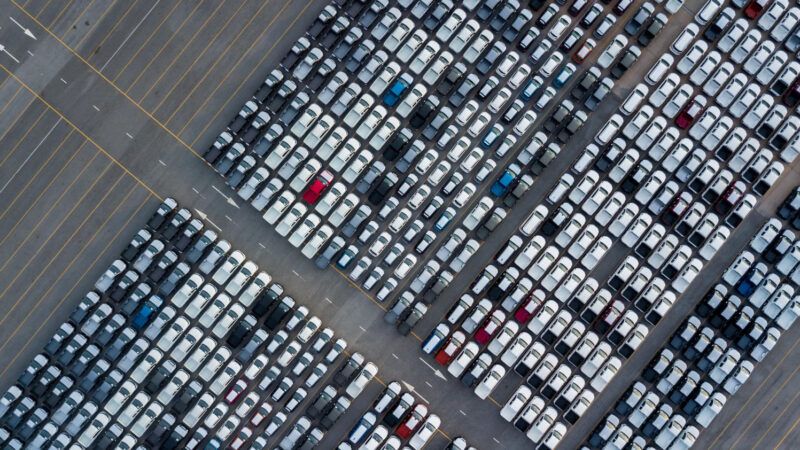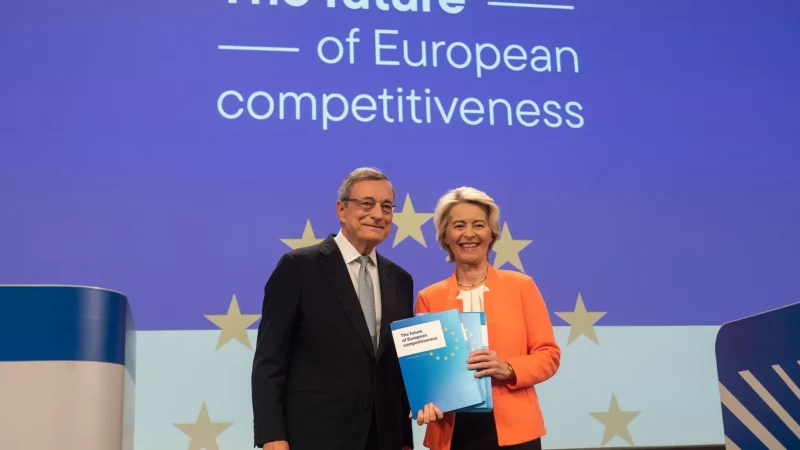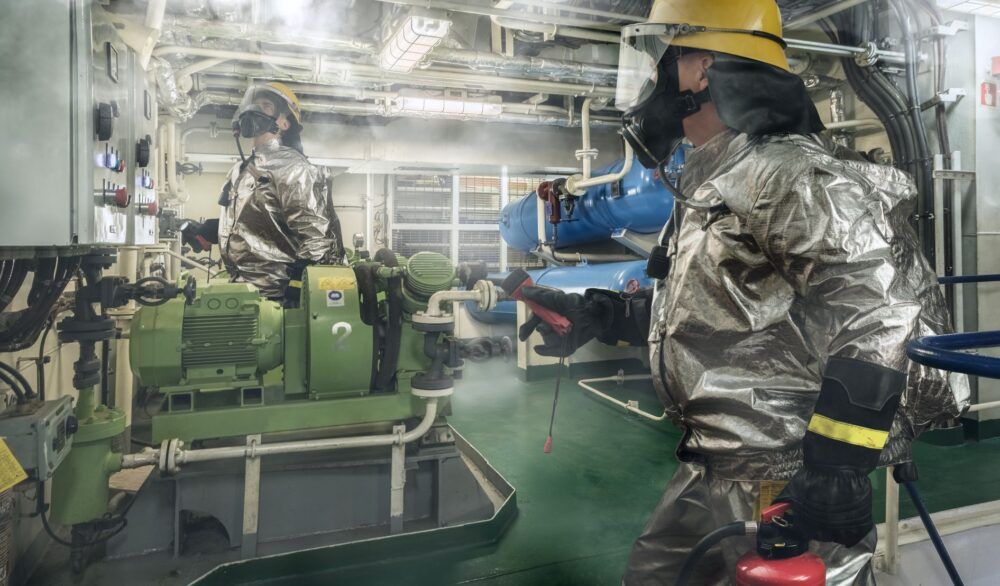 LASH FIRE seeks to bring international maritime regulations to ro-ro vessels carrying vehicles using new fuels. (GettyImages)
LASH FIRE seeks to bring international maritime regulations to ro-ro vessels carrying vehicles using new fuels. (GettyImages)
Safety innovation: the risk of fire on the vessels of the future of the ships of the future
The European LASH FIRE project seeks to solve the challenges that the introduction of new fuels in the future road transport will represent. The challenge is to increase safety with fire prevention systems using innovative technology to promote legislation in line with the new mobility.
 LASH FIRE seeks to bring international maritime regulations to ro-ro vessels carrying vehicles using new fuels. (GettyImages)
LASH FIRE seeks to bring international maritime regulations to ro-ro vessels carrying vehicles using new fuels. (GettyImages)
LASH FIRE, legislating against on-board fire
LASH FIRE ('Legislative Assessment for Safety Hazards of Fire and Innovations in Ro-ro ship Environment') is a project funded by the European Union. It is the third project to develop maritime fire safety solutions with innovative technologies, operations and applications.
It aims to promote safer transport for the mobility of the future, which, according to the signed agreements, will have to reduce its annual CO2 emissions by at least 50% by 2050 compared to 2008 levels.
While the road transport sector is moving in this direction by introducing zero-emission fuels such as hydrogen, liquefied natural gas or electric batteries, the ships that transport them are also working to ensure that their transport does not create safety problems, especially fires on board.
"We know the reasons why a petrol or diesel vehicle ignites and we have the means to extinguish the fire. However, in the case of electric vehicles, for example, this ignition is spontaneous and cannot be extinguished until the gas in their lithium batteries is drained. Therefore, we must take measures for their extinction and containment that are different from those considered so far," says África Marrero, researcher at CENIT and leader of the LASH FIRE ignition prevention group.
The project also seeks to adjust international maritime regulations to this new scenario and provide knowledge to prevent fires in transported cargo in order to contribute to the safety and sustainability of maritime transport. The European Commission, through its Horizon 2020 research and innovation programme, is investing 12.2 million euros over 4 years, between 2019 and 2023.
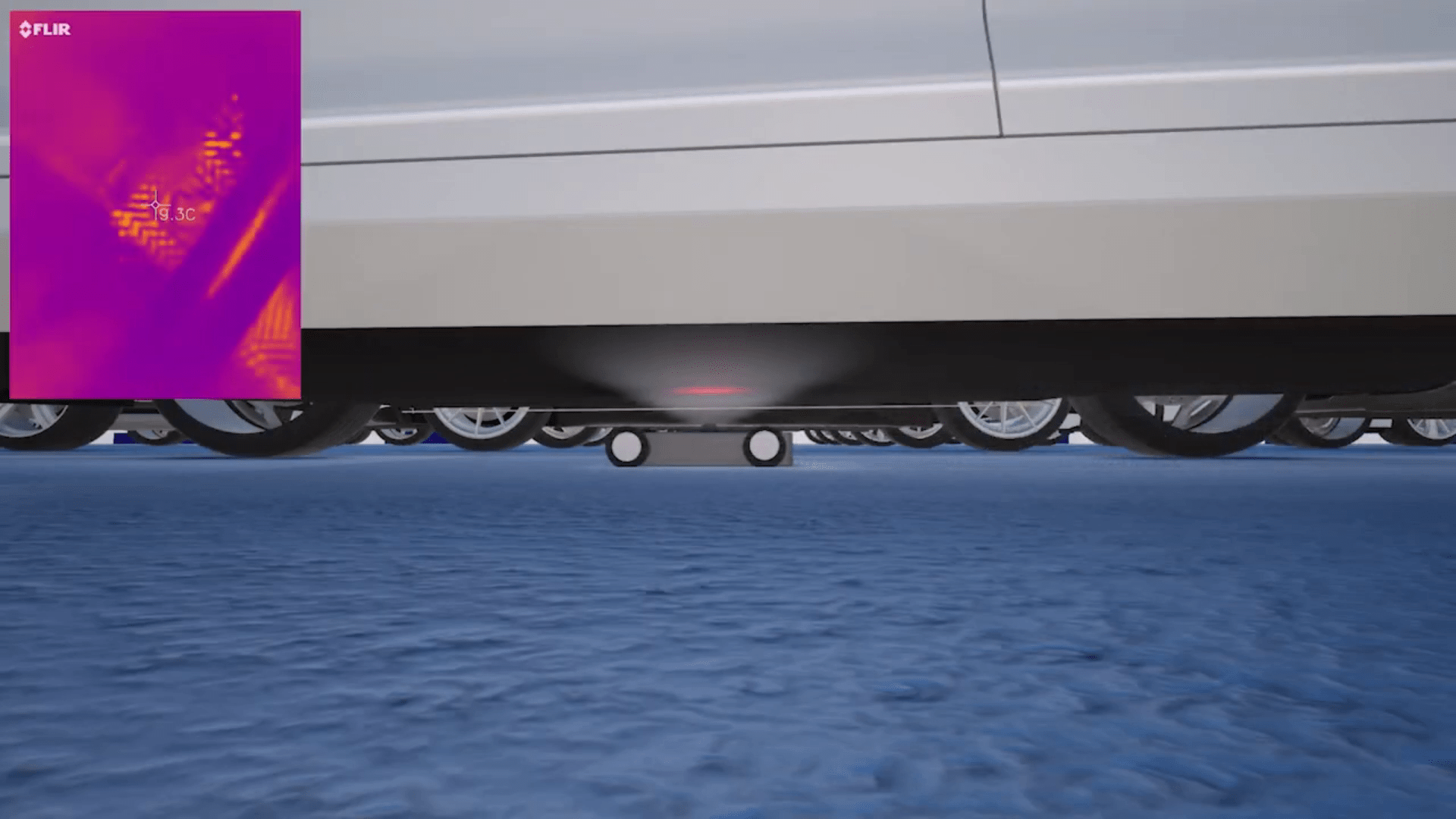
90% of accidents are caused by cargo fire
"LASH FIRE is a project promoted by the European Commission following several EMSA studies such as Firesafe I and II," explains Marrero. Ninety per cent of the accidents that occur in ro-ro spaces on this type of vessel are due to a fire in the cargo they are carrying, figures that justify research in this field.
"Ships follow a set of regulations," she continues, "but these units do not have a specific framework to prevent this from happening. That is why up to 25 partners from 13 EU countries are working to develop and demonstrate 20 new procedures and technical innovations to enhance the fire protection and prevention of ro-ro ships.
32 serious fires on Ro-ro and Ro-pax vessels in 9 years
Between 2006 and 2015, 32 serious fires were recorded on Ro-pax vessels. The project aims to reduce their frequency by 35% and the number of fatalities by 45%.
"While on other types of ships the cargo is compartmentalised, palletised or containerised, acting as a physical barrier against fire, the decks of these ships are like large open car parks, with no obstacles for the flames to spread. Moreover, when transporting cars with fuel or trucks with tarpaulins that catch fire easily, the fire spreads quickly," warns África Marrero.
The project evaluates three types of ro-ro vessels: Ro-pax, Ro-ro Cargo and Vehicle Cargo, used to assess the performance of the proposed solutions and the estimated cost to implement them.
The selection has mainly taken into account the arrangement of ro-ro holds and the capacity for passengers and cargo compared to statistical data of the world fleet.
The danger of transporting electric vehicles on ships
The paradox is that advances in the technology used in car engines complicate on-board safety. Given that electric vehicles will be at the heart of sustainable mobility in the future, the solution is obviously not to ban them but to develop safe systems for their transport.
This is why operators are calling for regulation by the International Maritime Organisation (IMO). "Right now there are internal regulations of shipping companies and some do not allow electric vehicles to be loaded on board precisely because of this safety problem," warns the expert.

Ignition prevention on board
The technical part of the LASH FIRE project is divided into twelve work packages. The one led by CENIT and involving six other consortium members is 1) ignition prevention. The others are 2) cooperation and communication; 3) formal safety assessment; 4) ship integration; 5) effective manual operations, 6) inherently safe design, 7) detection, 8) extinguishing and 9) containment.
Marrero shares the solutions they are developing, but first, she explains, they created a database to evaluate all accidents up to 2021 and the causes of the fire.
"At the beginning we only focused on road freight, but we also analysed fires in tunnels and car parks caused by electric or alternative fuel vehicles because they have very similar conditions," he explains.
From this historical data, it was decided what intrinsic risk score each vehicle has and it was quantified. The aim is to be able to distribute the cargo on the different decks of the ship in such a way that the risk is as low as possible.
Between 2006 and 2015, 32 serious fires were recorded on Ro-pax vessels. The project aims to reduce their frequency by 35% and the number of fatalities by 45%
Ranking of the fire danger of transporting vehicles by boat
Within the Ignition Prevention Work Package, four solutions are being developed to detect hot spots on transported vehicles:
- Stowage Planning Tool. A tool that plans and stows cargo on deck.
- Sensor arc. Placed in the terminal, their purpose is to examine the hot spots on each vehicle of the ro-ro cargo that comes on board in order to know its actual status. If they generate an alarm, inspection is carried out. If it is rejected for security reasons, the stowage planning tool proposes new solutions for repositioning the cargo.
- Drones. These devices monitor, at ground level, the temperature of the vehicles. If it detects a higher temperature than desired, it sends a message to the Stowage Planning Tool, which in turn alerts the loading officer to take preventive measures.
- Guidelines and directives for the disconnection and monitoring of electric vehicles and connected reefer units on board ships.
Marrero explains that this cargo planning is already used to distribute dangerous goods. The aim is to apply this distribution to other general cargo, including electric vehicles and refrigerated containers, and to adapt operations to this stowage proposal.
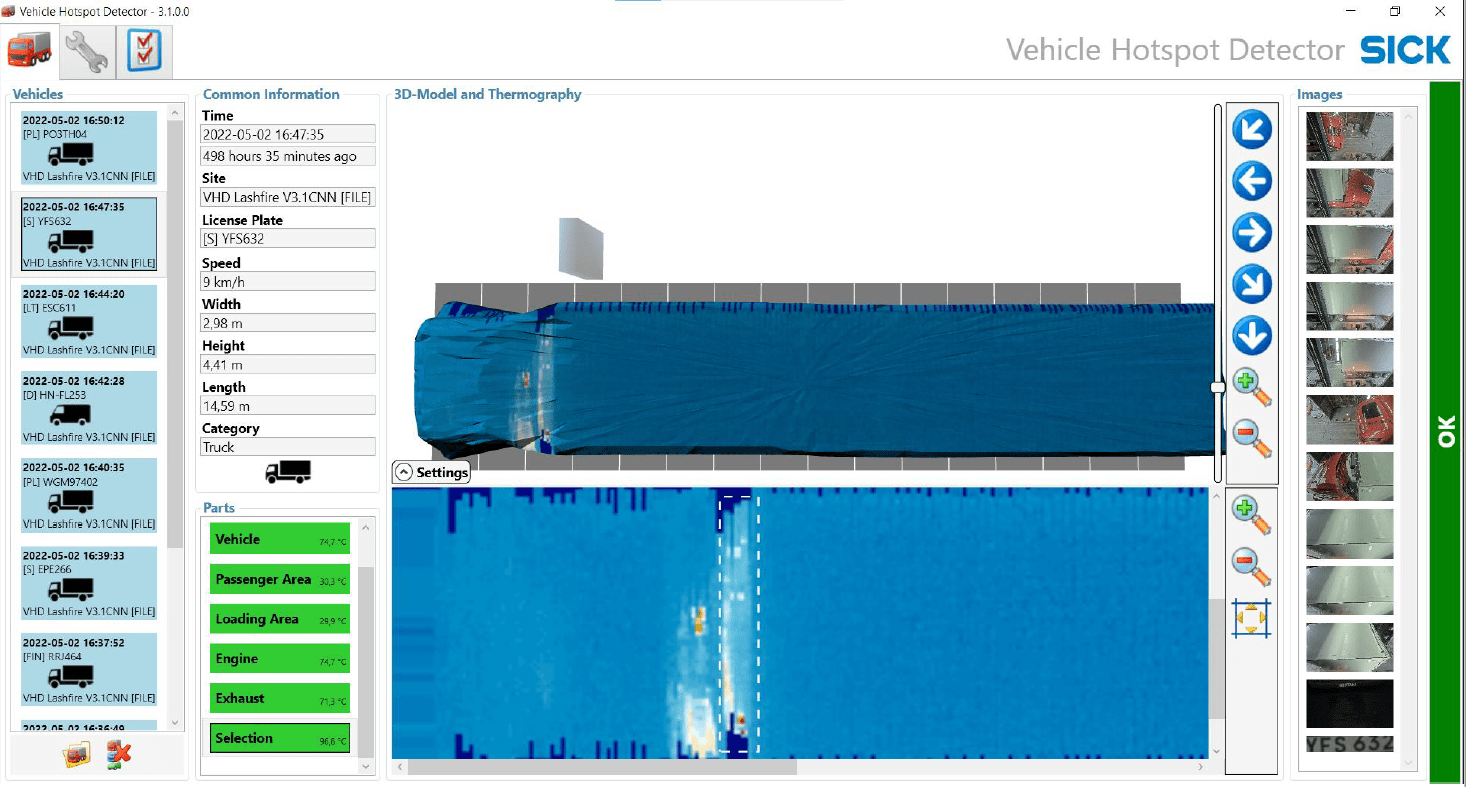
"In the case of trucks, for example, which have been on the road for hours, their wheels or chassis are sometimes too hot. Individually, this may not be a risk in itself. However, placing this vehicle next to a unit that is somewhat deteriorated can cause a fire," says Marrero.
For those smaller terminals without the ability to organise or zone vehicles by category before accessing the ship, the tool itself displays, via a screen, the vessel's decks in different colours, allowing the hot units to be visualised.
"Thus, even if they cannot stow in the safest way, the cargo can be located. In the event of a fire, first response fire patrols will know what they are dealing with because right now, they don't, especially on mixed decks," says the leader of the ignition prevention group.
Generating debate on sustainability and security
All members of the consortium meet every six months to share solutions, generate discussions and define possible actions. Marrero highlights the involvement of the operators, who are active in giving their opinions on these solutions. Also of the role of another advisory group, which in this case helps the more technical teams to outline the proposal for a law to be presented to the IMO to adapt the new trend of zero emissions transport on board.
"It is a very ambitious project because it aims to change regulations. The objective is to add it to SOLAS (International Convention for the Safety of Life at Sea) as soon as possible with the aim of improving the safety and operation of ro-ro ships worldwide," says Marrero.
The aim, he continues, is to gain support, as there must be a consensus in the vote. "That is why we are not limiting ourselves to Europe. A very active country is Japan, as their operators, without being members, have the same problems," she shares.
The sustainability of transport is a priority and a present and future trend. In parallel, the LASH FIRE project wants to make its transport as safe as possible.




